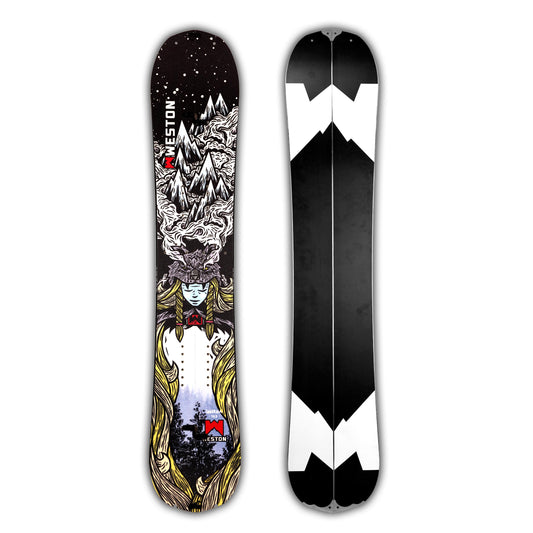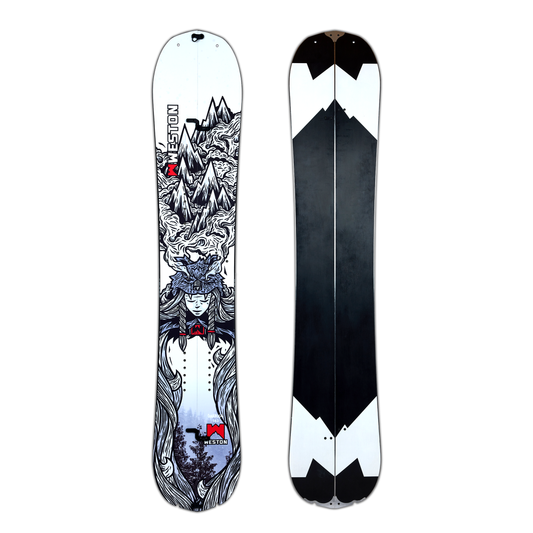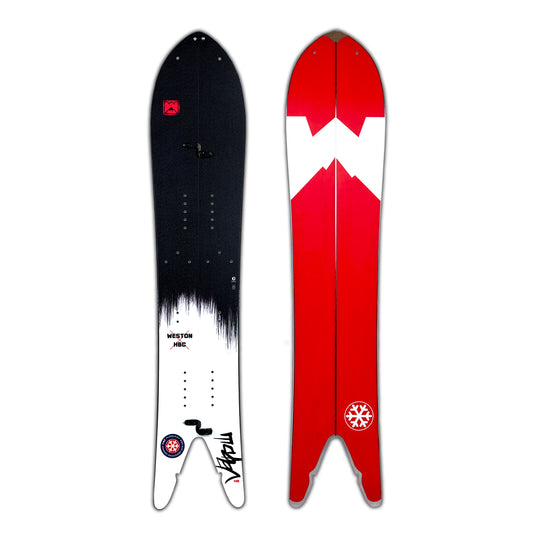How To Choose Your Snowboard or Splitboard

WHAT LENGTH SNOWBOARD DO I NEED?
The Basics: A longer snowboard will float better in deep snow and hold an edge better. A shorter snowboard will turn quicker and be easier to spin/maneuver. Refer to the chart below to determine the correct snowboard length for your height/weight/style.
Pro Tip: Keep in mind there are other factors aside from just your height and weight that help to determine board size including; conditions, terrain, personal preference and boot size. Some models have been designed for very specific purposes and will exist outside these recommendations.

HOW WIDE SHOULD MY SNOWBOARD BE?
The Basics: Waist width refers to the width of the board at its narrowest point. When sized correctly, your snowboard boots should hang over the edges of the snowboard ever so slightly but not enough to hit the snow when the board is on edge. Refer to the chart below to determine the correct snowboard waist width for your boot size.
Pro Tip: You can decrease snowboard length and increase width for a more nimble board that still floats well in deep snow but you will sacrifice some edge-hold. A rider might want to do this if they spend more time in tight trees with deep snow. See the below points for some guidance on how snowboard width affects different areas of performance.
- Float - A wider snowboard will float better than a narrower one. Generally a powder snowboard will run wider.
- Edge Transition - As a snowboard gets wider, you will notice it will take longer to transition from edge to edge. You want to find the sweet spot of enough board to ensure you don't have toe drag, but not so much that you are struggling to get the board on edge.
- Toe Drag - The bane of existence for anyone with over an 11 size boot. If you have toe drag, it's like pulling the e-brake in a car when trying to make a tight turn, except more violent, and will often end your carve. Suffer from the drag? Read → Do I Need A Wide Snowboard?

TERRAIN & FUNCTION
- Freeride - If you are hard charging in open bowls or steep couloirs then consider sizing it up for additional edge-hold and stability across variable terrain.
- Powder/Trees - Consider a shorter, fatter snowboard to be more nimble while maintaining float.
- Freestyle - If you are throwing tricks off side hits or spending a good amount of time in the terrain park, you'll generally want to size down to reduce swing weight and improve your ability to maneuver your board around.
- Backcountry - If you are going to be weighted down with safety equipment, bump the splitboard up 3-5cm from your typical resort board to help maintain your float and edge-hold.
WHAT IS CAMBER VS. ROCKER?
The Basics: Camber essentially refers to the curvature of the base of your snowboard.
- Standard (or Traditional) Camber - In a full camber board, the curve of the snowboard base mimics a rainbow, reaching its highest point in the middle, making the tip and the tail the contact points on the snow. Standard camber helps the rider to transition with greater energy from edge to edge and provides better edge hold, but sacrifices float in deep snow.
- Reverse Camber (or Rocker) - In a full reverse camber board, the curve of the snowboard reaches the lowest point in the middle, mimicking a u-shape or upside down rainbow. This profile lifts the tip and tail of the snowboard to make the center of the board the initial contact point with the snow. Reverse camber helps the rider to initiate turns, is less catchy from edge to edge and helps float the board through deeper snow but sacrifices energy/pop and edge-hold.
- Hybrid - Both camber and rocker have great qualities that help to boost performance. Luckily with the blessings of modern technology, you don’t have to choose between the two! Many snowboards nowadays are designed with rocker/camber combinations in the places where you need them so you can have the best of both worlds. A camber section underfoot provides edge-hold while a rocker section in-between the feet allows for easier turn initiation and extra lift in deeper snow.
Pro Tip: For optimum performance in powder, take a snowboard with a good amount of reverse camber in the nose to help float and keep you on top of the deep snow.
*Splitboard Tip: Why is camber underfoot good for skinning? Better traction and efficiency. The convex arch shape, when weighted down, creates more contact area for skins to grip on the snow below and less opportunity for heavy snow to collect on top.
WHAT IS SIDECUT AND WHY SHOULD I CARE?
The Basics: Sidecut (aka turn radius) refers to the natural curve you see when you look at the snowboard between the widest point at the tip and the widest point at the tail. The narrower a snowboards’s waist is in relation to its tip and tail, the shorter the turn radius and therefore the deeper the sidecut.
- A Deep sidecut, or shorter turn radius, will naturally want to make quicker, sharper turns.
- A Subtle sidecut, or longer turn radius, will have a tendency to want to point straight down the mountain for longer turns and faster riding.
- A Blended sidecut radius can combine the best of both worlds. The bigger initial and final radius make the snowboard feel like it’s got a larger radius, but the smaller radius in the middle results in a quicker turn when aggressively carving. This also helps counteract the tendency of wider models to be sluggish edge-to-edge.
WHY DOES FLEX MATTER IN A SNOWBOARD?
The Basics: A softer flexing snowboard allows you to turn and manipulate the board with greater ease but may be more likely to “chatter” or feel loose at higher speeds. A stiffer board provides more stability and edge-hold but may require more energy to flex for a lightweight rider.
Pro Tip: Look to balance camber and flex with your style of riding.
- Freeride - A stiffer flexing snowboard with a good amount of traditional camber under/between the feet will serve you best for ripping carves at higher speeds, charging through ice and crud, and absorbing heavier landings without buckling.
- Powder - Look into a "Directional Flex" or a snowboard with a softer flexing nose to help float and keep you on top of the deep snow and a stiffer tail for better edge-hold and snap.
- All-Mountain - Take a mid flexing snowboard with a good camber/rocker combo to allow for smaller, tighter turns and improved play at a wide array of speeds and variable conditions. Stiffer boards will plow through crud with speed but are less maneuverable. Softer boards are easier to maneuver but tend to be "chattery" through crud with less control at speed.
- Freestyle/Park - For jibbing and hitting rails, take a softer flexing snowboard with a bit of flat or reverse camber to provide a consistent platform for grinds and landings, while allowing you to manipulate and press the snowboard. If you prefer the jump line over the jib line, a stiffer board will better serve you for bigger air, bigger features and stomping heavier landings. Look for something middle of the road for a nice well rounded board that can do it all.
WHY DOES SHAPE MATTER IN A SNOWBOARD?
The Basics: Different shapes of snowboards are designed for maximum performance in certain conditions and terrain.
- Directional - The snowboard has the binding inserts set back a little towards the tail and the dimensions may be fatter from nose to tail. This will help you float in deeper snow and engage your turns with greater ease. Awesome for Freeride/Powder.
- Twin - The board is identical from tip to tail and the binding inserts are at true center. Perfect for Freestyle/Park.
- Directional Twin - The board is identical in shape from tip to tail, but the feet may be set back just slightly towards the tail. Ideal for All-Mountain riding.
Explore Splitboards →
Explore Snowboards →
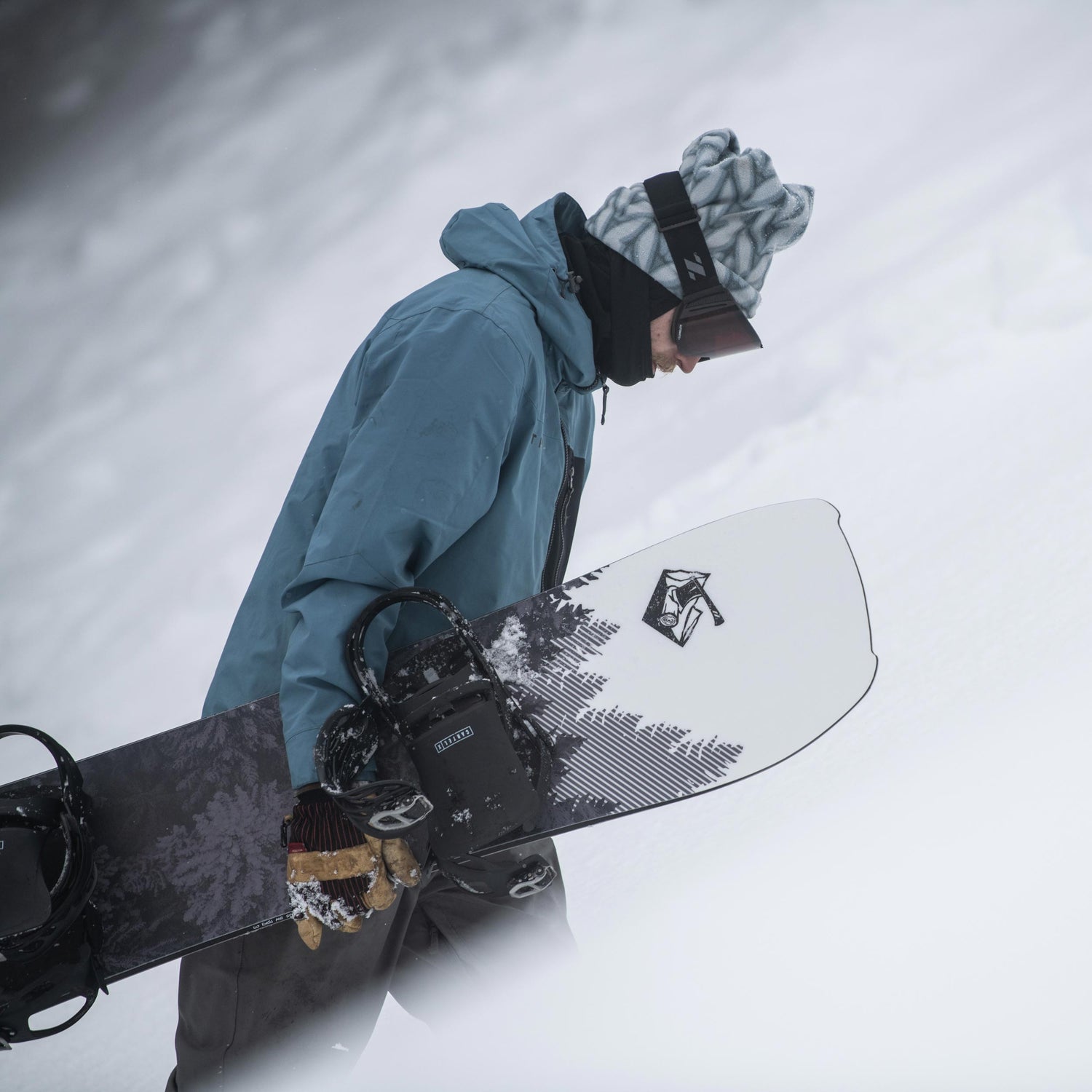
EXPLORE SNOWBOARDS
HIT IT →SPLITBOARDS
-
Gnarnia Splitboard
Regular price $ 989.00 USDRegular priceUnit price / per -
Gnarnia Carbon Splitboard
Regular price $ 1,349.00 USDRegular priceUnit price / per -
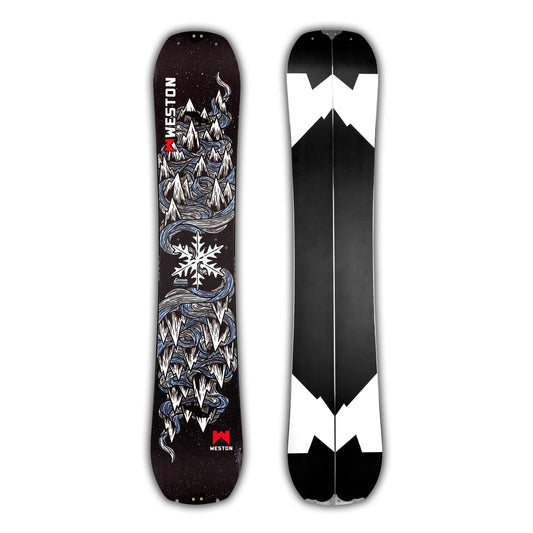 Sold out
Sold outDream Machine Splitboard
Regular price $ 849.00 USDRegular priceUnit price / per -
Japow Splitboard x Hokkaido Backcountry Club
Regular price $ 989.00 USDRegular priceUnit price / per

